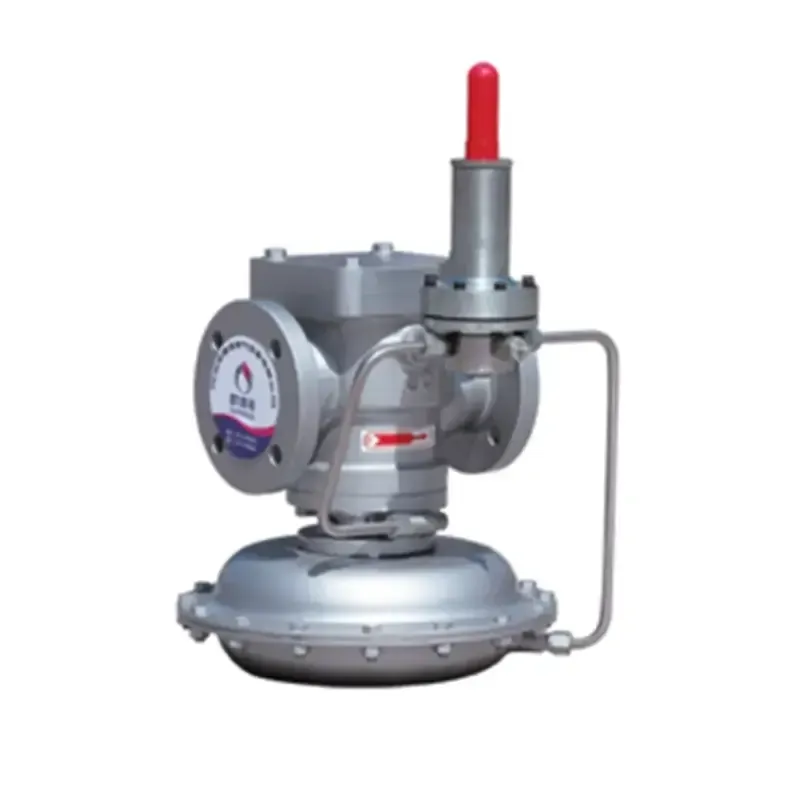
Oct . 16, 2024 04:18
Back to list
Understanding the Functionality and Applications of Pneumatic Valves in Automation Systems
Understanding Pneumatic Valves Functions and Applications
Pneumatic valves are crucial components in various industrial and automation systems, playing an essential role in controlling airflow and regulating the operation of pneumatic devices. These valves facilitate the management of compressed air, which is a common power source in numerous applications, from simple machinery to complex automation processes. This article aims to explore the types, functions, and applications of pneumatic valves, highlighting their significance in modern technology.
Types of Pneumatic Valves
Pneumatic valves come in several types, each designed to perform specific functions. The most common types include
1. On/Off Valves These valves are the simplest form and control the flow of air by either fully allowing or fully blocking it. They are used in applications where a binary control is sufficient, such as operating cylinders or actuators.
2. Regulating Valves These valves maintain a specific flow rate or pressure within a pneumatic system. They are essential in processes that require consistent air pressure or flow control, preventing system failures due to pressure fluctuations.
3. Directional Control Valves These valves manage the direction of airflow in a system. They often have multiple ports and can control the movement of actuators, allowing machines to perform complex tasks. Common configurations include 2/2, 3/2, and 5/2 valve types, indicating the number of ports and positions.
4. Flow Control Valves These valves regulate the speed of actuators by controlling the flow rate of air directly. They are crucial in applications like pneumatic cylinders, where the speed of extension and retraction needs to be precisely controlled.
5. Solenoid Valves These are electrically operated valves that use electromagnetic coils to actuate the valve mechanism. Solenoid valves provide efficient and reliable control over pneumatic systems and are often used in automated setups, where remote or programmed operation is required.
Functions of Pneumatic Valves
The primary function of pneumatic valves is to control the flow and pressure of compressed air in a system. These valves can regulate speed, direction, and force, thereby influencing the performance of the pneumatic components. Additionally, they help in
pneumatic valve

- Safety Pneumatic valves can provide safety mechanisms by releasing pressure in case of emergencies, preventing system failures or accidents.
- Efficiency By optimizing air flow and pressure, pneumatic valves improve the overall efficiency of pneumatic systems, leading to reduced energy consumption and operational costs
.- Control They enable precise control over pneumatic components, allowing for intricate movements and operations in machinery, which is particularly important in manufacturing environments.
Applications of Pneumatic Valves
The versatility of pneumatic valves makes them suitable for a wide range of applications across different industries. Common uses include
- Manufacturing Pneumatic valves are integral to automated assembly lines, controlling robotic arms and pneumatic actuators used in production processes.
- Food and Beverage These valves manage the operation of packaging machines, ensuring precise filling and sealing processes that maintain hygiene and efficiency.
- Automotive In the automotive industry, pneumatic valves are used in various systems, including paint spraying equipment and tire inflation machines.
- Construction Pneumatic tools, such as jackhammers and nail guns, rely on pneumatic valves for their operation, demonstrating their importance in construction tasks.
Conclusion
Pneumatic valves are indispensable components in the realm of automation and industrial processes. By enabling the effective control of compressed air, they enhance the performance, safety, and efficiency of pneumatic systems. Understanding the different types and functions of these valves is crucial for engineers and technicians aiming to optimize their applications in various sectors. As industries continue to evolve and seek automation solutions, the importance of pneumatic valves is only expected to grow.
Latest news
-
Safety Valve Spring-Loaded Design Overpressure ProtectionNewsJul.25,2025
-
Precision Voltage Regulator AC5 Accuracy Grade PerformanceNewsJul.25,2025
-
Natural Gas Pressure Regulating Skid Industrial Pipeline ApplicationsNewsJul.25,2025
-
Natural Gas Filter Stainless Steel Mesh Element DesignNewsJul.25,2025
-
Gas Pressure Regulator Valve Direct-Acting Spring-Loaded DesignNewsJul.25,2025
-
Decompression Equipment Multi-Stage Heat Exchange System DesignNewsJul.25,2025

